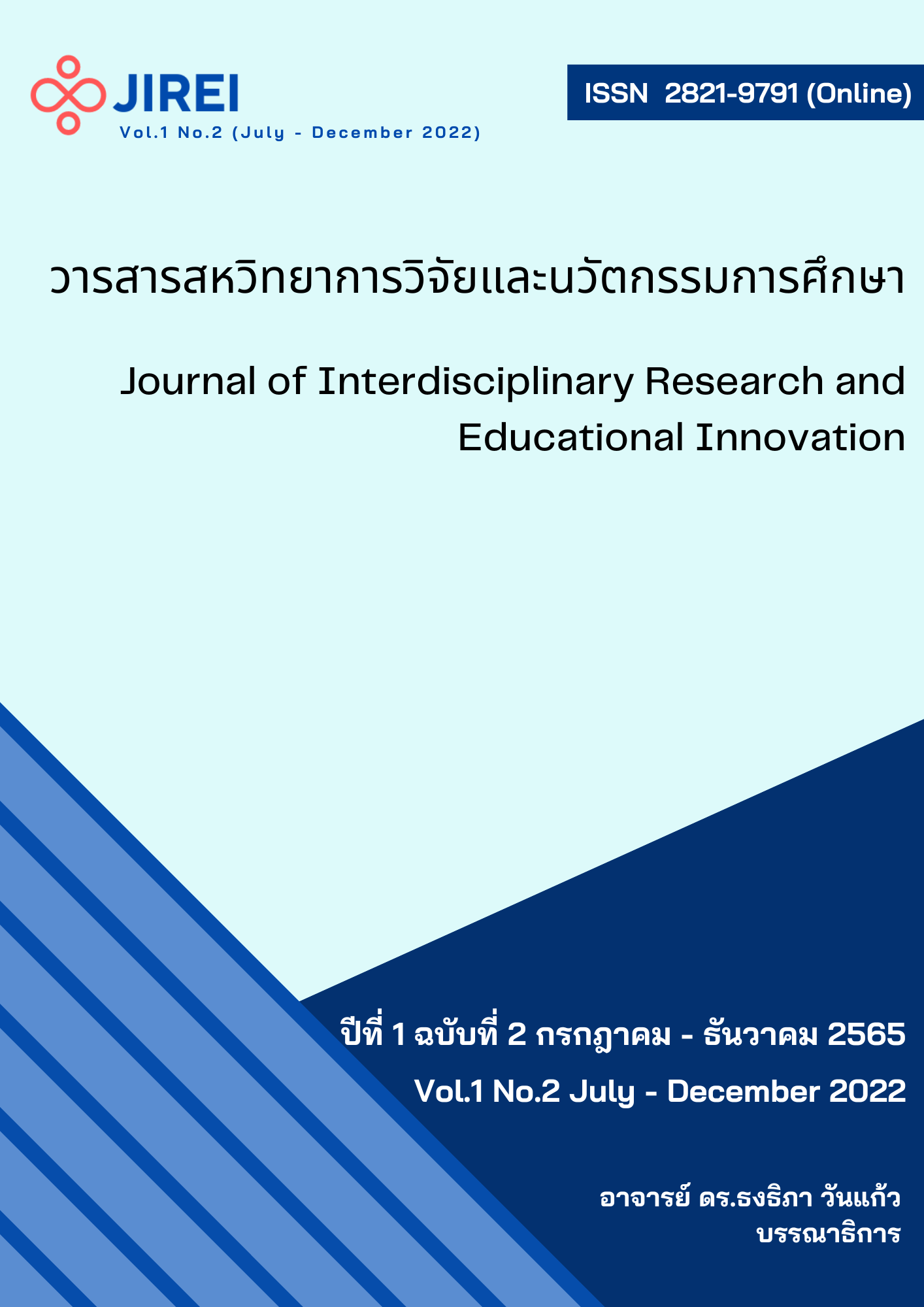Studying of Online Teaching Chinese as a Foreign Language by Using VDO Clip with and without Closed Caption for International School Students
คำสำคัญ:
Video Clips, Online teaching, Students’ achievement, International School studentsบทคัดย่อ
Since the beginning of the new crown epidemic in 2020, many schools have started online teaching. The specific objective of this research was 1)to study the appropriateness of Mandarin online teaching by using 3 different closed captions video clips about Mid-Autumn Festival, the first video clip is without a closed caption, the second video clip has an English closed caption, and the third video clip has pinyin & English closed caption. 2)compare the learning achievement of Mandarin online teaching after using these 3 different kinds of closed caption video clips. Tools of research have a lesson plan about the “Mid-Autumn Festival Topic”, VDO Clips with three different closed captions mentioned above, a student questionnaire, evaluation form for the appropriateness of online teaching for experts and students. Those tools all pass IOC before use. The population of this study is 24 grade 6 students from an International School in Saraburi. Data for this study were collected by using a survey instrument. Then was analyzed by using S.D. and x̄. The results show that video clips for international school students should be in English caption only or no caption at all. If students want to learn more than only Chinese background knowledge when they watch video clips, captions should be used in pinyin. As a result, students will be able to memorize pinyin and it is good for them during mandarin tests.
เอกสารอ้างอิง
Bo Wen, G. (2018). The application of micro video in professional foreign language teaching practice.
Danan, M. (2004). Captioning and Subtitling: Undervalued Language Learning Strategies. Meta, 49. 67-77.
Hsu, C.-K., Hwang, G.-J., Chang, Y.-T., & Chang, C.-K. (2013). Effects of Video Caption Modes on English Listening Comprehension and Vocabulary Acquisition Using Handheld Devices. Educational Technology & Society, 16(1), 403–414.
Indira D., S. A. (2017). ONLINE LEARNING. International Education & Research Journal [IERJ], 3. 32-34.
Lemei, Y. (2006). China's Mid-Autumn Day. Journal of Folklore Research, 43(3): 263–270.
Lidia Puspa A. (2016). YouTube Videos in Teaching Listening: The benefits in Experts’ Views. Research in English and Education (READ), 1(2),152-160.
Lihui, Y. & Deming, A. (2005). Handbook of Chinese mythology. ABC-Clio. 89–90.
Lorenz, T., Griffith, E.&Isaac, M. (2020). "We Live in Zoom Now". The New York Times.
Mary, B. (2011). Distance Education for Teacher Training: Modes, Models, and Methods. Education Development Center, Inc. 55-58
Meng, X. (2021). A Study on the Application of Short Videos in Elementary Chinese Comprehensive Courses, Take Joseph Middle School in Thailand as an Example.
Meng, Z. (2019). The Teaching Practice of Cross-Cultural Short Videos in a Special Topic Class on Social Life in Contemporary China: The Case of Egdobo High School in Hungary.
Prapatsorn,S. & Saiphon,S. (2021). Learning Online Preparedness during the COVID-19 Pandemic in Thailand. Journal of MCU Peacce Studies, 9(3), 885-894.
Richard, E. M. (2018). Thirty years of research on online learning. Thirty Years of Applied Cognitive Psychology, 33(2). 152-159.
Rossafri, M.Wan Ahmad Jaafar Wan, Y. & Balakrishnan, M. (2008). USING VIDEO MATERIALS IN FORMAL EDUCATION: A METHODOLOGICAL APPROACH. 2nd International Malaysian Educational Technology Convention, Kuantan, Pahang, Malaysia.
Soumik, S. (2020). A BRIEF HISTORY OF ONLINE EDUCATION. Retrieved from A Brief History of Online Education, Adamas University.
Stepanchuk, C. &Wong, C. (1991). Mooncakes and hungry ghosts: festivals of China. China Books & Periodicals. 51–60.
Thi Tinh Thuong P., Hoang Anh L. & Doan Trang D. (2021). The Factors Affecting Students’ Online Learning Achievement during the COVID-19 Pandemic: A Bayesian Exploratory Factor Analysis.
Wenbo, Y. (2022). A Study on the Trend of Changes in the Number of Chinese Learners and Their Chinese Proficiency in Southern Thailand in Recent Years. RESEARCH ON INTERNATIONAL CHINESE LANGUAGE EDUCATION, 1(1), 37–48.
Xing, L. (2006). Festivals of China's Ethnic Minorities. China Intercontinental Press. 124-127.
Yiwei, Y. (2021). Investigation and Research on Application of Four Main Online Chinese Teaching Software Teaching with PowerPoint. Retrieved 1st Oct from https://www.niu.edu/citl/resources/guides/instructional-guide/teaching-with-powerpoint.shtml
Zheng, L. (2009). Mid-Autumn Festival. In Berkshire Encyclopedia of China: modern and historic views of the world's newest and oldest global power. Massachusetts: Berkshire Pub. Group. 5:1450.
Zheng, M., Bender, D. & Lyon, C. (2021) . Online learning during COVID-19 produced equivalent or better student course performance as compared with pre-pandemic: empirical evidence from a school-wide comparative study. BMC Med Educ, 21, 495.





